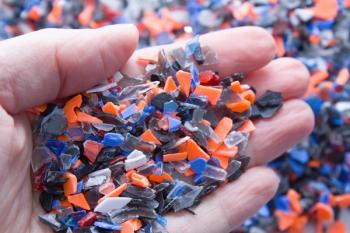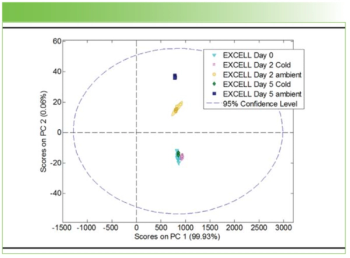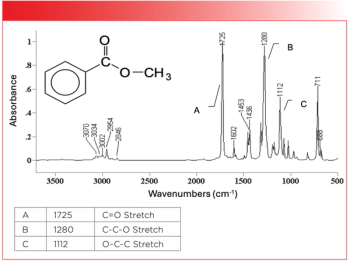
Rigaku Releases Updated Handheld Raman Analyzer for Chemical Threat Detection
In an announcement on June 12, Rigaku Analytical Devices, which is a division of Rigaku Holdings Corporation headquartered in Akishima, Tokyo, announced the launch of its Icon series of 1064-nm Raman analyzers, its fourth-generation of the instrument.
In an announcement on June 12, Rigaku Analytical Devices, which is a division of Rigaku Holdings Corporation headquartered in Akishima, Tokyo, announced the launch of its Icon series of 1064-nm Raman analyzers, its fourth-generation of the instrument (1).
The company made the product announcement at the International Hazardous Materials Response Teams Conference (HAZMAT), which is hosted by the International Association of Fire Chiefs (IAFC) in Baltimore, Maryland, from June 13–14, 2025 (1).
Rigaku’s introduction of a new generation of handheld instruments reflects a broader trend occurring in analytical spectroscopy. As more work is being done out in the field, spectroscopists and analysts are needing more analytical instrumentation that can be conducted outside the traditional laboratory setting. Currently, the push for smaller and smaller spectrometers and handheld devices has led to competition among instrument manufacturers to build and design instruments to suit their clients’ needs (2).
From cultural heritage studies to biological analysis to forensics, handheld devices are being increasingly used, and this is a trend that is expected to continue.
What are the main features of Icon-X?
Icon-X was designed for chemical threat detection in high-risk environments. This lineup of instruments is meant to be used by users in environments such as bomb squads (EOD), first responders, military operations, and border security teams. According to the company, this is the first 1064 nm Raman analyzer to feature standoff chemical analysis. This capability allows hazardous substances to be identified from a safe distance, which in turn reduces the risk to personnel by eliminating the need for direct sampling and minimizing potential exposure to dangerous materials such as improvised explosive devices (IEDs), homemade explosives (HMEs), and chemical warfare agents (CWAs) (1).
Apart from the ability to conduct standoff chemical analysis, the Icon-X also contains an on-board chemical library that covers a wide range of hazardous materials, including explosives, narcotics, toxic industrial chemicals, drug precursors, cutting agents, and more (1).
What were some of the key updates to this set of Rigaku’s handheld Raman analyzers?
The Icon-X also showcases several design and performance upgrades over previous generations of Rigaku’s handheld Raman analyzers. Some of the main key enhancements include faster processing speeds, an ergonomic design with a more intuitive interface, a larger, more responsive touchscreen, an illuminated keypad for use in low-light conditions, an integrated GPS capabilities for location tagging of scan data, aiding in site documentation and fleet tracking, and a high-resolution 13MP camera with LED flash to capture clearer images of scanned materials (1).
The updated tool can also scan through translucent containers and identify impure or mixed substances without the interference of fluorescence, which is a common challenge in traditional Raman analysis (1).
“While developing the Icon Series, we considered the years of feedback received from our global network of 1064 nm Raman users and partners, said Michael Hargreaves, vice president of Science and Technology at Rigaku Analytical Devices in a press release (1). “This allowed us to take a proven, field-accessible technology to the next level and really expand the capabilities of handheld Raman spectroscopy.”
Founded in 1951, the Rigaku Group has grown its presence in X-ray and thermal analysis, with its products being sold in over 90 countries and its workforce comprising of approximately 2,000 employees (3). With a strong emphasis on research and innovation, Rigaku serves industries ranging from semiconductors and batteries to environmental science and life sciences.
References
- Rigaku Analytical Devices, Icon-X. Rigaku. Available at:
https://rigaku.com/products/handheld-raman/icon-x (accessed 2025-06-13). - Workman, Jr., J. New Mini-NIR Device Shows Promise for Non-Invasive Blood Glucose Monitoring. Spectroscopy. Available at:
https://www.spectroscopyonline.com/view/new-mini-nir-device-shows-promise-for-non-invasive-blood-glucose-monitoring (accessed 2025-06-16). - Rigaku Analytical Devices, Message from the CEO. Rigaku. Available at:
https://rigaku-holdings.com/english/about/?hsLang=en (accessed 2025-06-13).
Newsletter
Get essential updates on the latest spectroscopy technologies, regulatory standards, and best practices—subscribe today to Spectroscopy.





